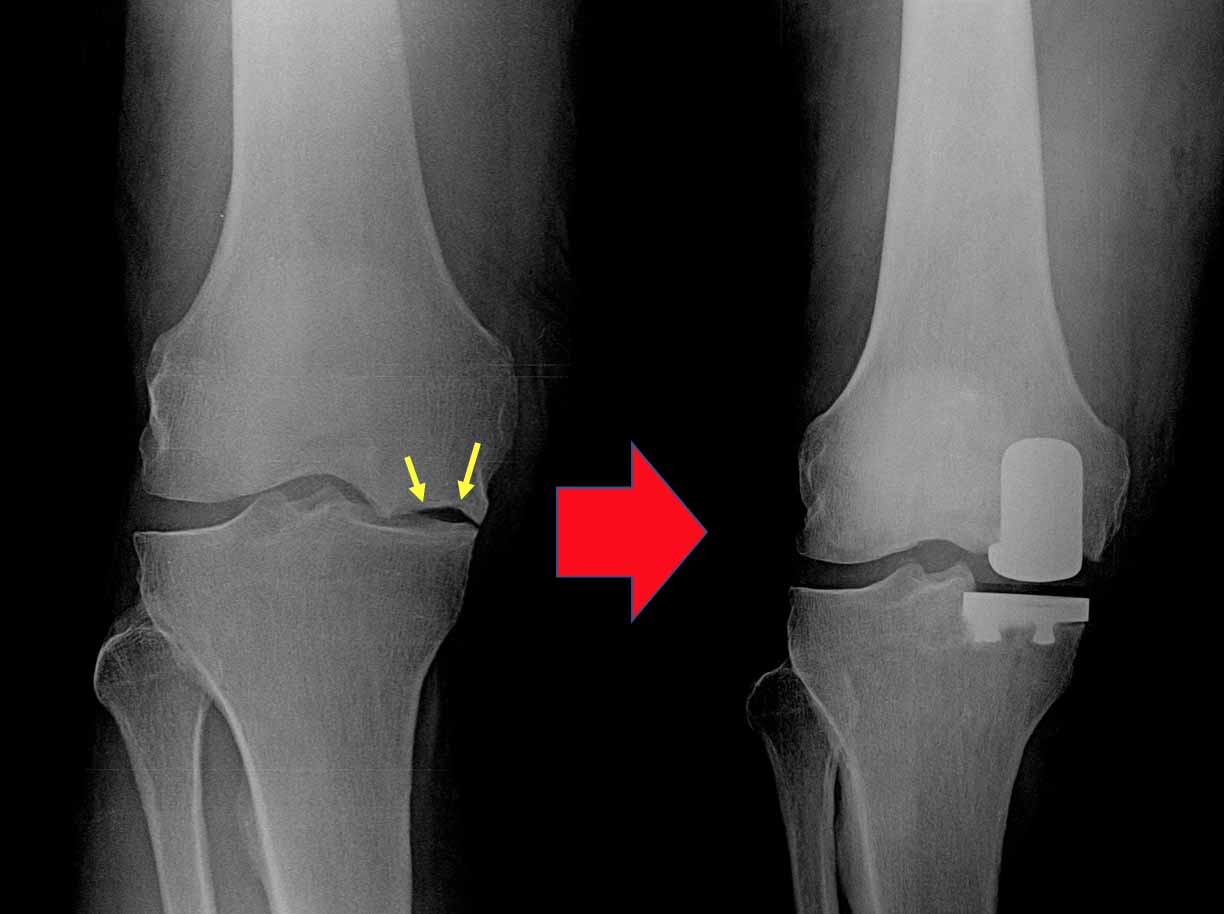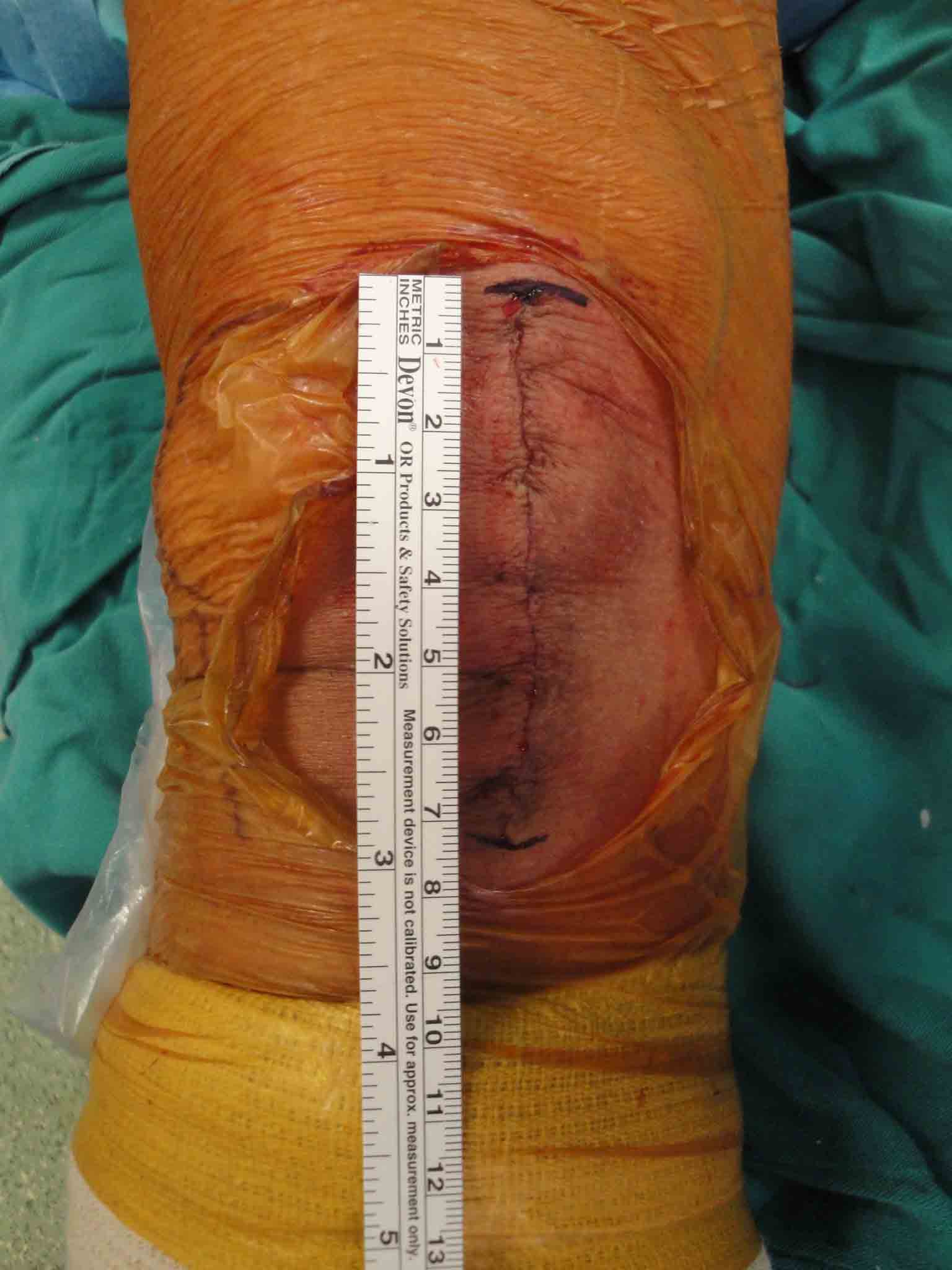Author: Prof. Reha Tandogan, M.D.
Partial (unicondylar) knee replacement is a surgical treatment for patients who have end stage cartilage damage confined to a single compartment of the knee. Your surgeon resurfaces only the damaged parts of the knee joint while preserving your ligaments, cartilage and menisci in the uninvolved part.
Is partial knee replacement suitable for me ?
This surgery is for patients over 50 years of age, when other joint preservation techniques such as osteotomies and cartilage regeneration are not feasible. Mostly performed for osteoarthritis (cartilage wear), partial knee replacements are also an excellent choice for osteonecrosis of the knee (bone infarct and collapse of a part of knee). (Figure 1) Your surgeon evaluates your X-rays and MRI’s to see if this surgery is suitable for you. If you elect to undergo robotic surgery, computed tomography (CT) scan of the whole limb is also necessary for the planning of surgery.
Figure 1 : Osteonecrosis on the inner part of the knee, arrows depict collapse of the bone. Treatment with partial knee replacement.

How is partial knee replacement performed ?
The operation takes about 1.5 hours, general or epidural/spinal anesthesia is used. Your surgeon replaces the worn out parts of the knee with small implants, through a 7-10 cm incision, taking care to preserve your soft tissue balance (Figure 2). The implants can be fixed with bone cement (a special putty that fixes the implant to bone) or cementless implants can be used in younger patients. You can get out of bed and walk on the operated leg the afternoon of surgery. Immediate knee exercises are started. A drain is not usually necessary.
Figure 2: Length of the incision in partial knee replacement

What is the role of robotic surgery in partial knee replacement ?
Robotic surgery is more accurate and precise than classical surgery. Robotic surgery can achieve an accuracy of 1 mm within the pre surgical plan. This results in better alignment and soft tissue balance of your knee, resulting in more normal feeling knees. However, no difference in survivorship has been proven compared to classical methods. Robotic surgery is more expensive than classical surgery and takes longer to perform.
What happens during my stay in the hospital after partial knee replacement ?
Physiotherapy can be started immediately and you are encouraged to perform exercises. Pain is controlled with medications and you can move around with a walker. You can be discharged from the hospital when you have active control of your muscles with good knee motion and pain manageable by tablets. This occurs usually during the 2. Day after surgery.
What should I expect from a partial knee replacement ?
Pain after surgery is mostly gone after 4 weeks and you can walk independently. Some stiffness in the knee and numbness around your scar is expected for a few months. You should be able walk and climb stairs without difficulty in a few months after surgery. Your knee range of motion will be the same or slightly improved after surgery. Swimming and cycling are possible, impact sports such as soccer and volleyball are not allowed.
Can partial knee replacements fail ?
Like all implants placed in the body, partial knee replacements wear and loosen after a certain time and need to be replaced. This is called a revision surgery. The expected lifetime of partial knees are 11-15 years but may last longer. Revision surgery is needed if the implants wear out or loosen, or there is disease progression in the uninvolved parts of the knee that become painful. Revision surgery for unicondylar replacement is conversion to a total knee replacement.
What is the difference between a total and partial knee replacement ?
In total knee replacement, all compartments of the knee are resurfaced, taking out your menisci and cruciate ligaments (Figure 3). This is an extremely successful operation for advanced cartilage destruction in your knee. However, comparative studies have shown that, partial knee replacements have better pain relief, better knee motion, easier rehabilitation and more “normal like feeling” knees compared to total knee replacements. Complications such as infection are less frequent after partial knee replacements. However, the survivorship of total knees is longer, with an expected lifetime of 20-25 years.
Figure 3 : The difference between a partial and total knee replacement. In partial knee replacement, the uninvolved parts of the knee are preserved.









